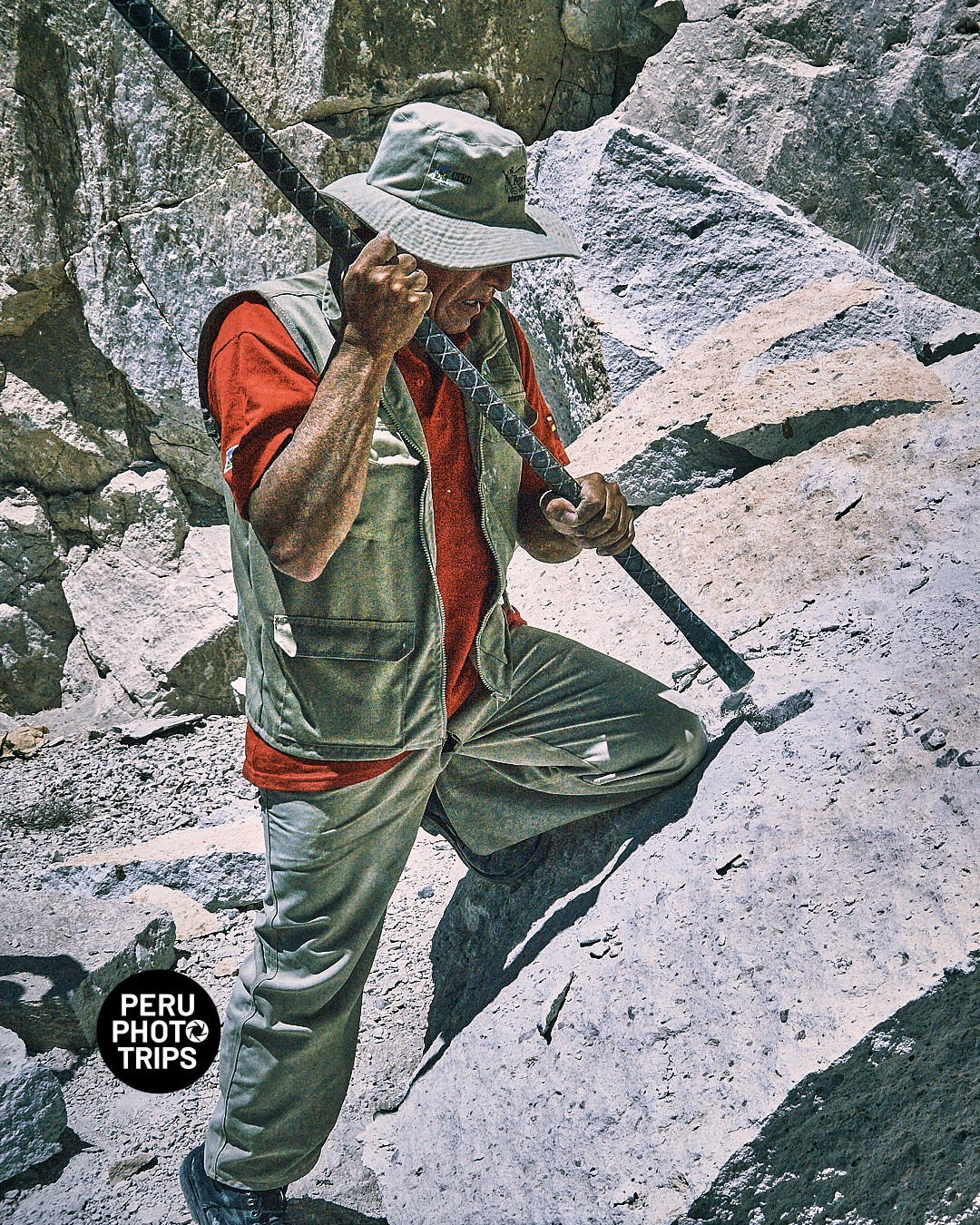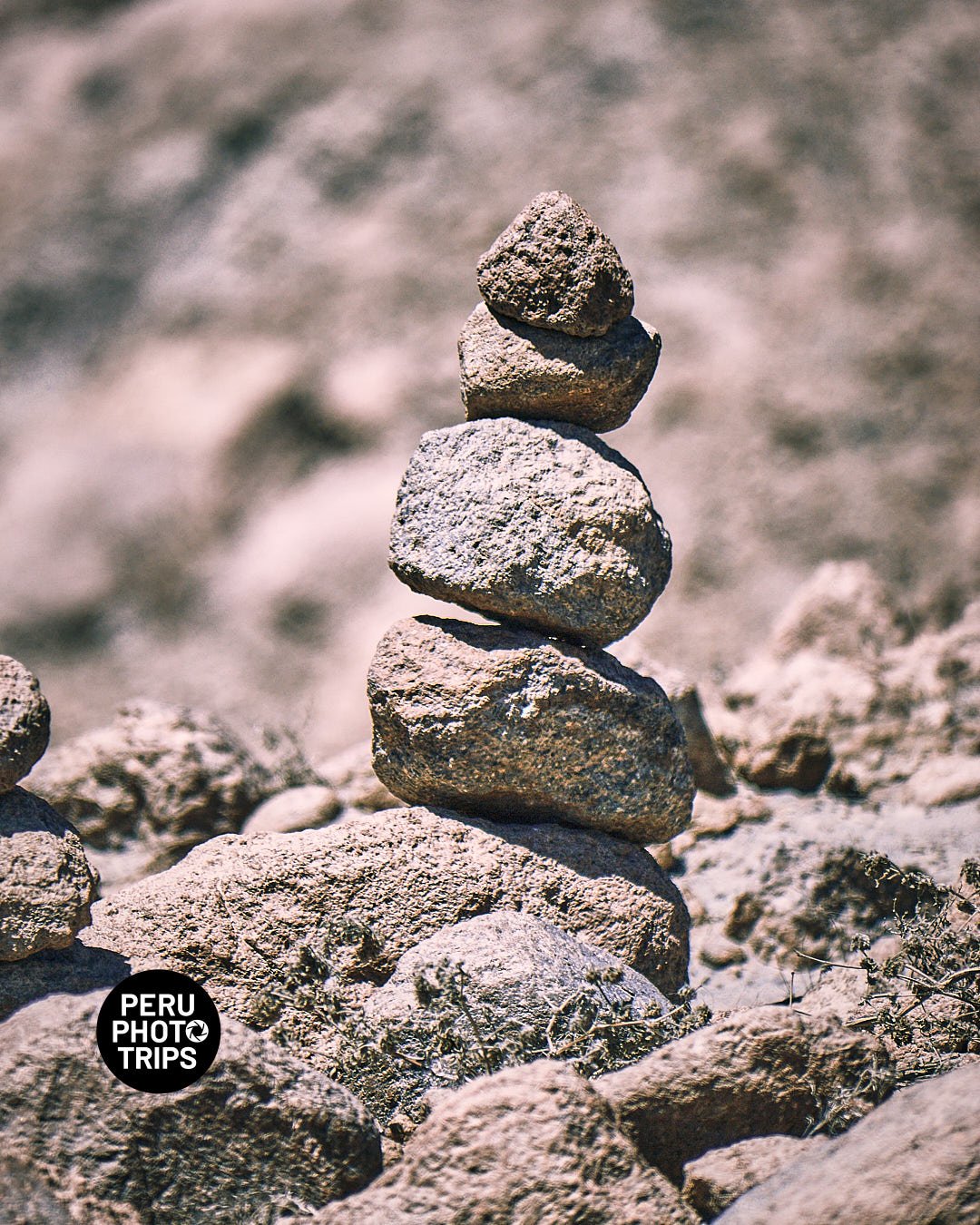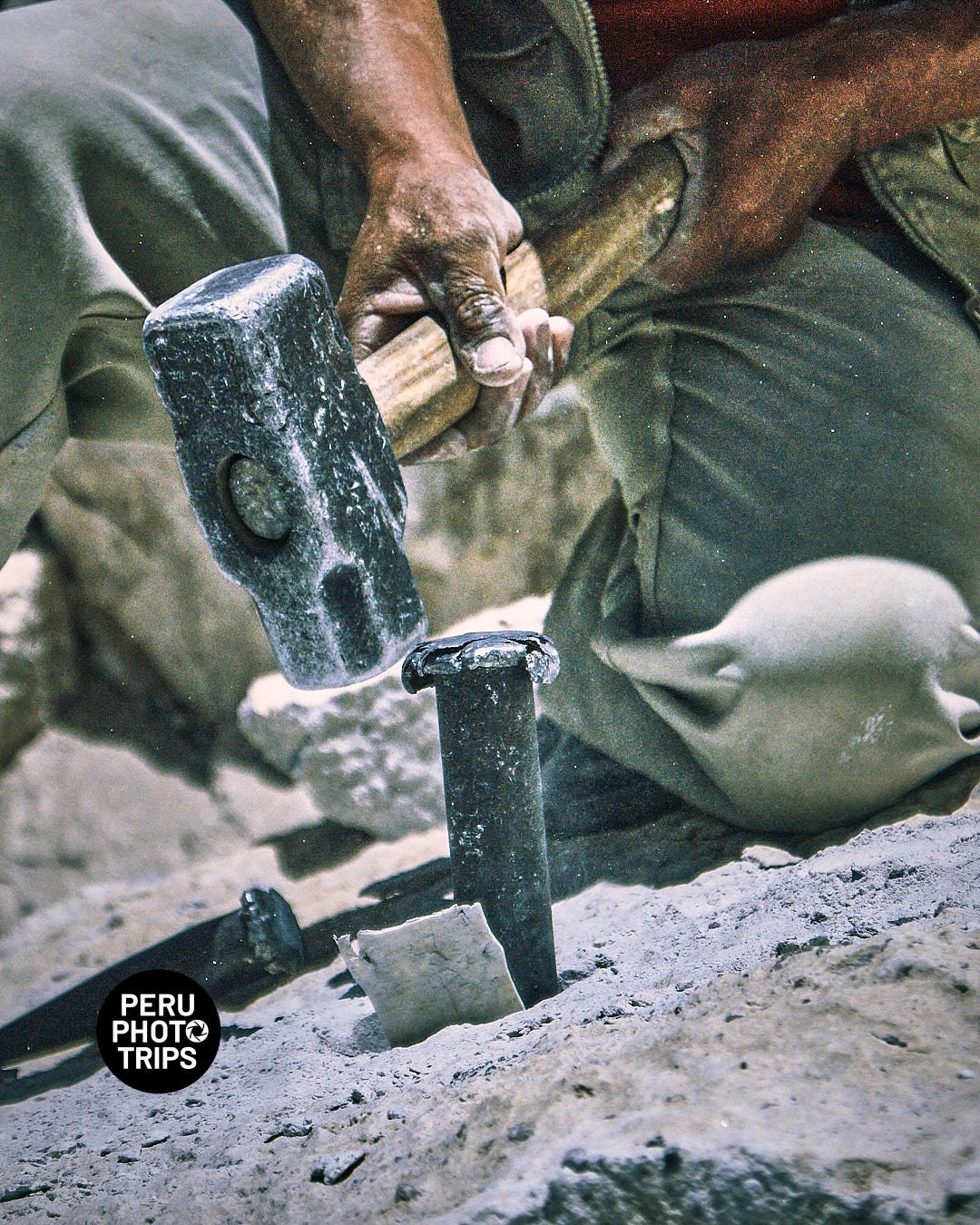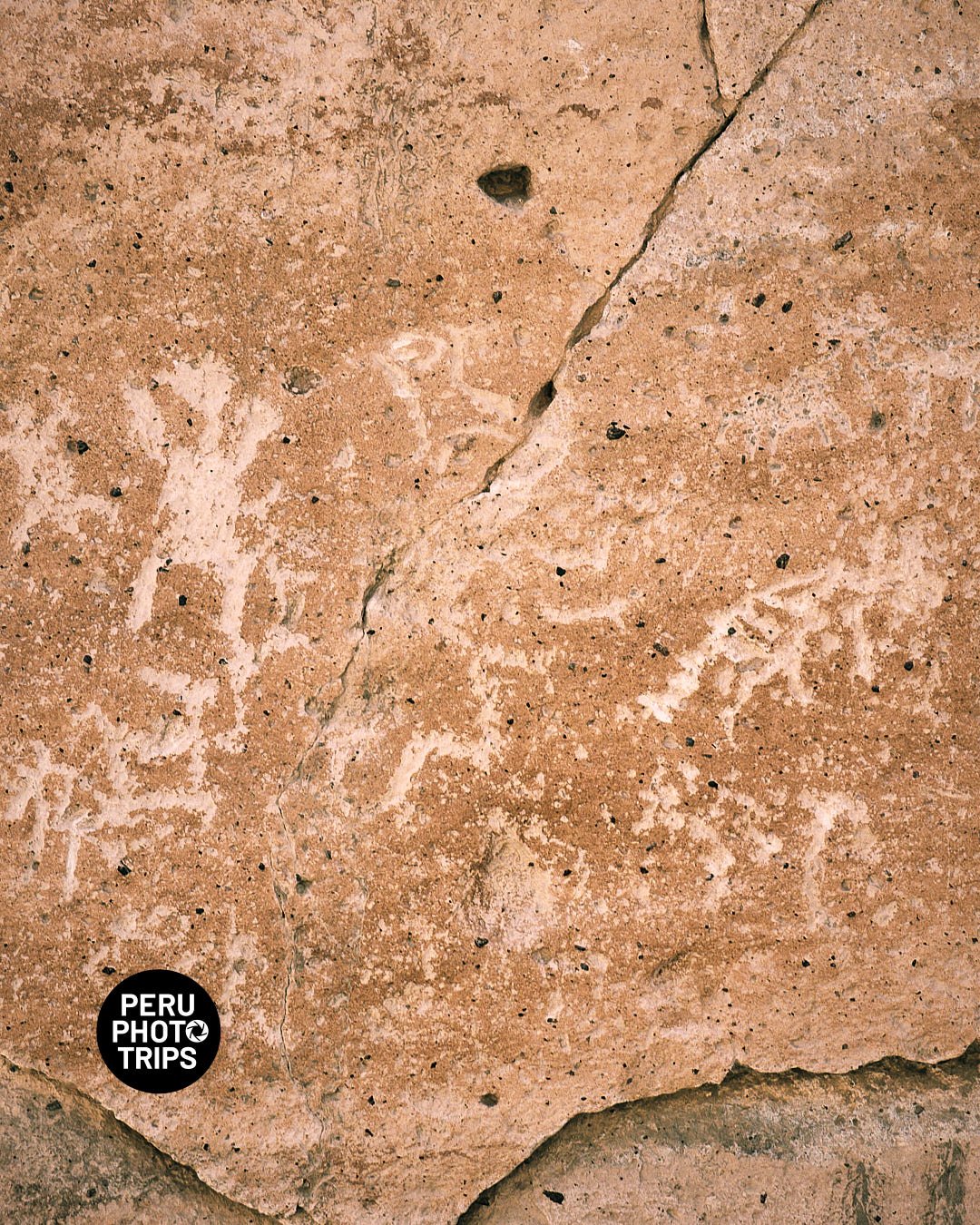arequipa QUARRY VOLCANIC STONE
Locally known as Canteras de Sillar is a dry valley formed by the ashes and pyroclastic flows from the eruption of the Misti and Chachani volcanoes over millions of years.
Then, it became a source of material for construction known by locals as “Sillar” very used from the Spaniard’s arrival, giving the architectural style to Arequipa City known because of that as the White City.
The best way to take photographs is to leave Arequipa very early in the morning, to avoid the traffic on the way out of the city and to avoid the vertical sunlight.
Once arrived at the starting point we get into a small canyon of capricious volcanic stone, where the shapes, textures and lights will let our imagination flow. Although the path is short, along the way there are petroglyph designs with people, llamas, condors, and many other symbols that show us the importance of the place in ancient times.
Then we move on to human intervention. Once in the quarry, the people in charge of the explanation are the stonecutters themselves, who, tools in hand, show us the technique for cutting the stone blocks.
It is recommended to bring some water and a snack.
Want to arrange a photo trip? Contact me.
Written and photographed by Jaime Quiroz Tirado






